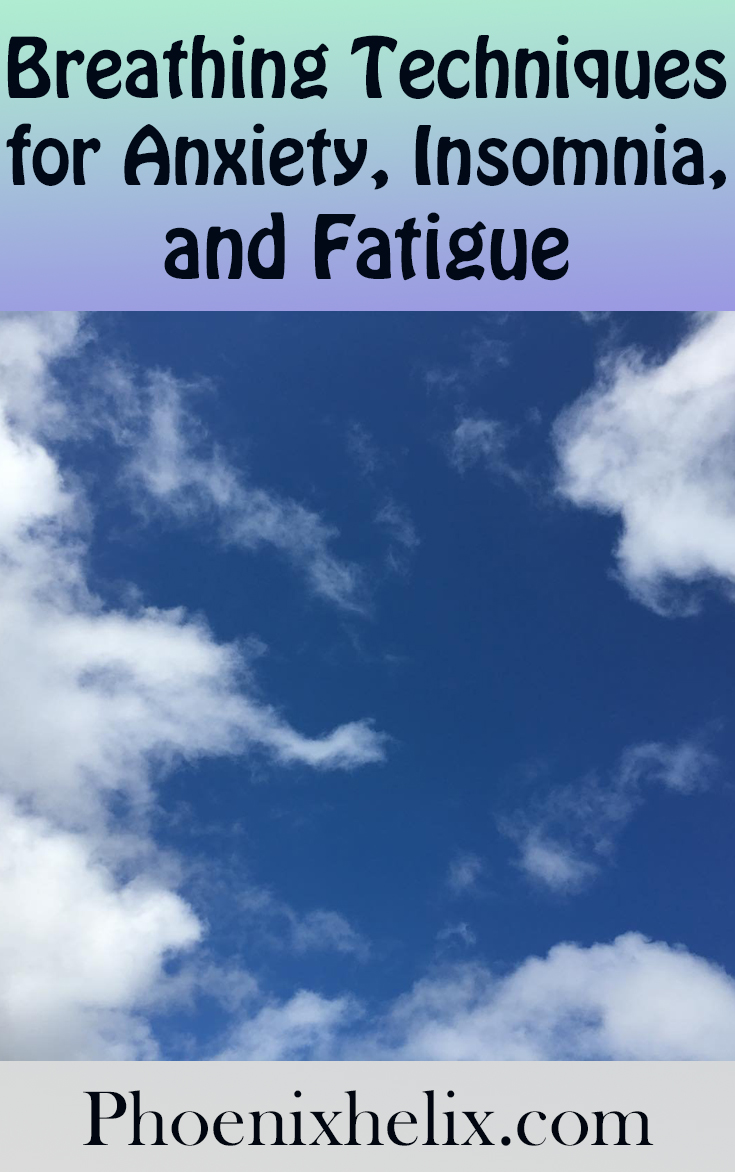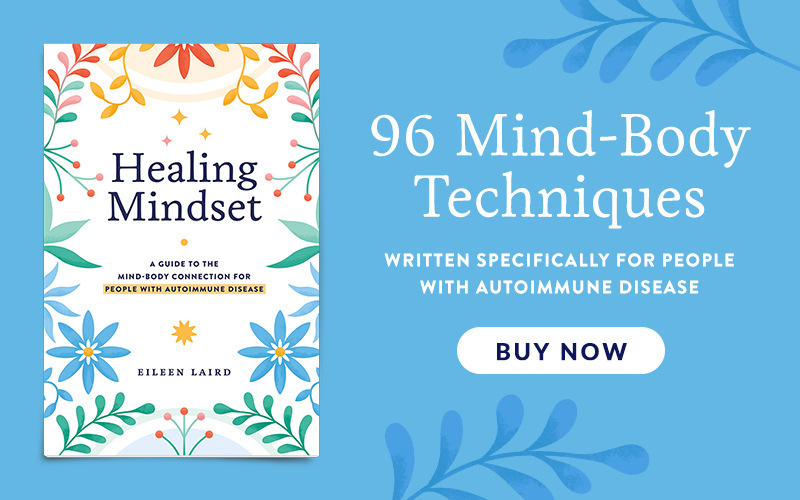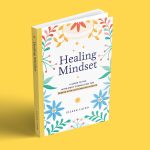“Breathing easily and fully is one of the basic pleasures of being alive.”
~ Alexander Lowen
Pressing Pause
Have you noticed that if you pause and take a slow, deep breath, you feel a little bit calmer? That’s because deep breathing taps the relaxation response. For people with autoimmune disease, this is an amazing power at our fingertips. Stress is a common trigger of autoimmune flares. Each time we interrupt the stress response and allow a cascade of relaxation to flow through our bodies instead – even for just a few minutes – we’re giving our bodies a gift. There are added benefits as well: deep breathing increases the oxygen supply to our organs, improves both mood and mental clarity, and can even alleviate pain.
Belly Breathing for Relaxation
If you watch a baby breathe, they do this naturally. Their belly rises and falls with each breath. If you watch an adult breathe, it will usually originate from the chest and be shallow instead of deep. Tension in the body restricts our breathing, and this in turn causes more tension, creating a vicious cycle. Retraining our bodies to breathe from the belly is a great tool for relaxing in the moment, as well as reducing tension long-term. In the research, they call it diaphragmatic breathing. The diaphragm is a large muscle at the base of our lungs, and it’s designed for breathing. Belly breathing activates and strengthens this muscle. The technique is simple. It’s often easier to do lying down on your back, with your legs bent to relax your back. If you can’t do that, it’s fine to do this technique sitting up. Place one hand on your belly and one hand on your chest. Take a deep breath in through your nose, and let your belly push your hand up. Your chest shouldn’t move, but if it does, don’t judge yourself. With practice, you’ll be able to breathe more easily into your belly. As you exhale, breathe out through pursed lips as if you were whistling, pushing all of the air out of your belly. Repeat this 5 times. As it becomes easier and more enjoyable, you can do longer sessions.
Crocodile Breathing for Anxiety
This is a variation on diaphragmatic breathing that you do face-down instead of face-up. This is one of my favorite anxiety-busters. The pressure of the floor on the abdomen combined with deep breathing helps dissipate that tense, “butterflies in the stomach” feeling. Lie face-down on your stomach with your legs straight. Rest your forehead on your hands, both palms down, one covering the other, and try to relax your chest and arms. A pillow under your ankles can help relax your lower back. (Note: If your body is uncomfortable in this position, modify it for your comfort or practice one of the other techniques instead.) Now, take a slow, deep breath in through your nose and feel your belly expand into the floor, out the sides of your lower ribcage, and into your lower back. The goal is a 360-degree expansion through the belly and diaphragm. Again, your chest shouldn’t move much at all. Hold your breath briefly. Then exhale slowly and fully. Pause briefly before repeating the cycle. As you practice this technique, you want the exhale to be longer than the inhale. Repeat the cycle 5 times. As it becomes easier and more enjoyable, you can do longer sessions.
4-7-8 Breath for Insomnia
This is a yogic breathing technique made popular by Dr. Andrew Weil, but I was introduced to it by members of my Facebook community. Many of you swear by this technique to help you fall asleep at night. Begin by placing the tip of your tongue against the ridge of tissue just behind your upper front teeth, and keep it there throughout the entire exercise. This might feel a little awkward at first. Step one is to prepare for the breathing technique by exhaling fully. Then, inhale gently through your nostrils for a count of 4. Hold the breath for a count of 7. Then exhale forcefully through the mouth around your tongue, pursing the lips and making a “whoosh” sound, for a count of 8. Repeat this cycle up to 4 times.
*Note: when you first try this exercise, it might be hard to hold your breath that long, or exhale that slowly. Don’t put yourself under stress or duress trying to achieve that time frame. Just do each step for the length of time that is comfortable for you in the beginning, with the goal of exhaling longer than you inhale. Over time, it will be easier to develop the 4-7-8 rhythm.
Breath of Joy for Fatigue
This is another yogic breathing technique, and it’s one of my favorites. Its goal is to energize rather than relax. It’s a great fatigue buster and mood lifter. Stand with your feet shoulder-width apart and parallel to each other, knees slightly bent. In this technique, you’ll be doing body movements as you inhale and exhale. For the inhale, you’ll be doing 3 arm movements which separate your inhalation into 3 parts. For the exhale, you will exhale fully with one full-body movement. This may sound a little complicated, but it’s fun to do, and the video below is a great demo:
- Step 1: Inhale through your nose to 1/3 of your lung capacity while swinging your arms up in front of your body, straight out at shoulder level with palms facing the ceiling.
- Step 2: Continue inhaling to 2/3’s lung capacity and stretch your arms out to the side like you’re flying.
- Step 3: Inhale to full capacity and swing your arms parallel and over your head, palms facing each other.
- Step 4: Open your mouth and exhale completely with an audible “ha” sound, as you fold forward and bend your knees, swinging your arms down and back behind you like a diver. Repeat this sequence 5 times.
*Note: If you start to feel light-headed instead of light-hearted, stop for a minute and just breathe normally. Don’t do this technique if it’s in any way painful. With autoimmune disease, symptoms vary from person to person and day to day. This is a great technique when movement feels good, but go with one of the other breathing techniques if movement is difficult.
Beginner Tips
- When we’re not accustomed to deep breathing, it’s common to try too hard. We force the breath, instead of allowing it. This was definitely true for me. I would breathe in too fast and too deep and struggle to hold my breath, and then feel like I failed if my exhale wasn’t longer than my inhale. It was stressful instead of relaxing! That’s not the goal. Approach this gently, and know that your breath will deepen over time. We are retraining our bodies, and it’s OK to be a beginner. I love deep breathing now, and it’s no longer a struggle. Here are some tips: Focus on relaxing as you breathe. Inhale gently, and stop at 80-90% of your full capacity. It will be easier to hold your breath there than at maximum inhalation. As you exhale, do it slowly, gently, and completely.
- Try the different types of breathing I described. One might be more comfortable for you than another. For me, there was a time when my joints were too inflamed to do the Breath of Joy – it would have been the opposite of joyful. Even now, I adapt that technique and the Crocodile Breath to accommodate the range-of-motion limits of my own body. My goal isn’t to do these techniques in a standard, perfect way, but rather in a way that is perfect for me.
- You can use these techniques as “medicine in the moment” to reduce anxiety, help you sleep, or give you energy. But you can also make deep breathing a part of your daily life. It’s a habit that doesn’t take much time. I love to start and end my day with three deep breaths that I do in bed. You can also set a reminder on your phone to take a break mid-day, and choose whichever breathing technique your body needs right then.
Troubleshooting
Some health conditions can make deep breathing difficult. Asthma is one example. There are also many autoimmune diseases that can impact diaphragm and lung function, either directly or through postural changes. If you try these exercises and find them very difficult, consider working with a professional. Respiratory therapists, breath workers, and some physical therapists specialize in helping improve and correct dysfunctional breathing patterns.
Further Resources
I chose four of my favorite breathing techniques to share above, but there are many more out there: Pranayama Yoga is a practice that focuses specifically on the breath and includes a wide variety of breathing exercises. And Buteyko is a philosophy of breathing that’s the opposite of deep. It focuses on other breath qualities instead and might be a great choice if deep breathing doesn’t feel beneficial to you.
You May Also Be Interested In










